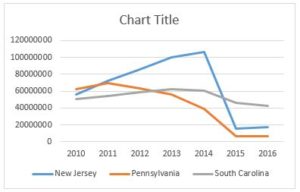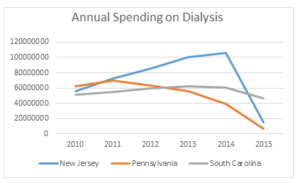Talking Medicare: A Good Thing Poorly Explained
On April 13, 2018, CMS released two Transmittals, Transmittal 243 and Transmittal 4021, and a related MedLearns Matter Article (MM10550). Collectively, these documents clarify Medicare’s coverage of ambulance transportation of SNF residents in a stay not covered by Part B, but who have Part B benefits, to the nearest supplier of medically necessary services that are not available at the SNF. This clarification relates to both the ambulance transport to the site of medical care, and the return trip.
In order to properly understand the clarification, it is helpful to review Medicare’s coverage of ambulance transportation provided to SNF residents. At the onset, it is important to note that Medicare draws a distinction between the first 100 days of a beneficiary’s SNF stay, and any subsequent days of the same stay. The first 100 days are commonly referred to as the “Part A Period.” Under current Medicare rules, all ambulance transportation provided during the Part A Period is the financial responsibility of the SNF, unless a specific exemption applies. Outside the Part A Period, Medicare’s coverage rules generally mirror the rules applicable to ambulance transports that originate at the patient’s residence. However, there is an exception that relates to transportation to and from therapeutic or diagnostic sites (i.e., those facilities identified with the “D” modifier). This clarification relates to transportation to and from diagnostic sites.
Medicare rules are clear that transportation of an SNF resident outside the Part A Period for the purpose of receiving medically necessary care that could not be provided at the SNF will be covered to the extent the ambulance transportation was both medically reasonable and necessary. This is true regardless of the type of facility to which the patient is transported. In this context, the term “reasonable” refers to the costs of transporting the patient to the site of medical care. Where it is cheaper to bring the patient to the service (e.g., an MRI or CT scan), Medicare will cover the service. Where it is cheaper to bring the service to the patient (e.g., certain minor procedures), Medicare rules indicate that the transportation would not be covered.
In other words, once an SNF resident is outside the Part A Period, Medicare will cover a medically necessary ambulance transport to a diagnostic site provided that it is cheaper to transport the patient to that site than to transport the equipment needed to provide care to the SNF.
As you can imagine, determinations as to the reasonableness of a particular service can be quite subjective. Moreover, these determinations can typically only be made on a case-by-case basis, i.e., it is extremely difficult for Medicare Administrative Contractors to make such decisions without seeing the ambulance trip report and other supporting documentation. As a result, CMS has historically given its MACs broad discretion to make these determinations.
The MACs have elected to utilize this discretion in various ways. Some MACs have essentially elected to rely upon the ambulance provider to make such determinations prior to submitting the claims. These MACs have therefore elected not to implement front-end edits for such claims.
Other MACs have elected to issue an initial denial, and handle reasonableness determinations through the appeals process. These MACs do so by implementing edits into their claims processing system that automatically deny claims submitted with the “ND” modifiers. However, because Medicare coverage rules indicate that transportation from anywhere to an SNF may be covered, these MACs do not have a corresponding edit to deny claims submitted with the “DN” modifiers.
The result is various inconsistencies in the ways claims for these situations are handled. Depending on the MAC jurisdiction in which you operate, a claim for an ambulance transport from an SNF to a diagnostic site (“ND”) for a beneficiary outside the Part A Period may be paid or denied. For those of you that operate in jurisdictions where the MAC denies this claim, you may also see the return trip either paid or denied. Note: if the transportation to the diagnostic site is denied as not being “reasonable,” the return trip should be denied as well.
It is these inconsistencies that CMS is addressing. Essentially, CMS is instructing those MACs that use claims processing edits to deny the “ND” transport to remove those edits. The practical effect is to force the MACs to use some other criteria to determine whether the roundtrip is reasonable (and, therefore, covered by Medicare Part B).
Please note that the coverage rules and clarification summarized above applies only to therapeutic and diagnostic facilities. It does not apply to ambulance transportation to and from a physician’s office. With the narrow exception of emergency ambulance transportation to a physician’s office as an interim stop on the way to a hospital, such transportation has always been and remains a non-covered service.
While I believe the change is, on net, a positive one for the industry, I would caution against reading too much into this clarification. CMS is not indicating that these transports will be covered in all instances. CMS is simply saying that, with respect to the initial processing of claims, it is willing to sacrifice some potential accuracy for the sake of greater national consistency. CMS in not restricting its MACs from using other means to make reasonableness determinations, e.g., the use of development requests, prepayment review, etc. While it is reasonable to assume that most MACs will elect not to utilize these tools, only time will tell if that is indeed what comes to pass. In the meantime, I am going to enjoy one of those rare instances where CMS used common sense, and removed an additional burden on our industry.
Have an issue you would like to see discussed in a future Talking Medicare blog?
Please write to me at bwerfel@aol.com.












